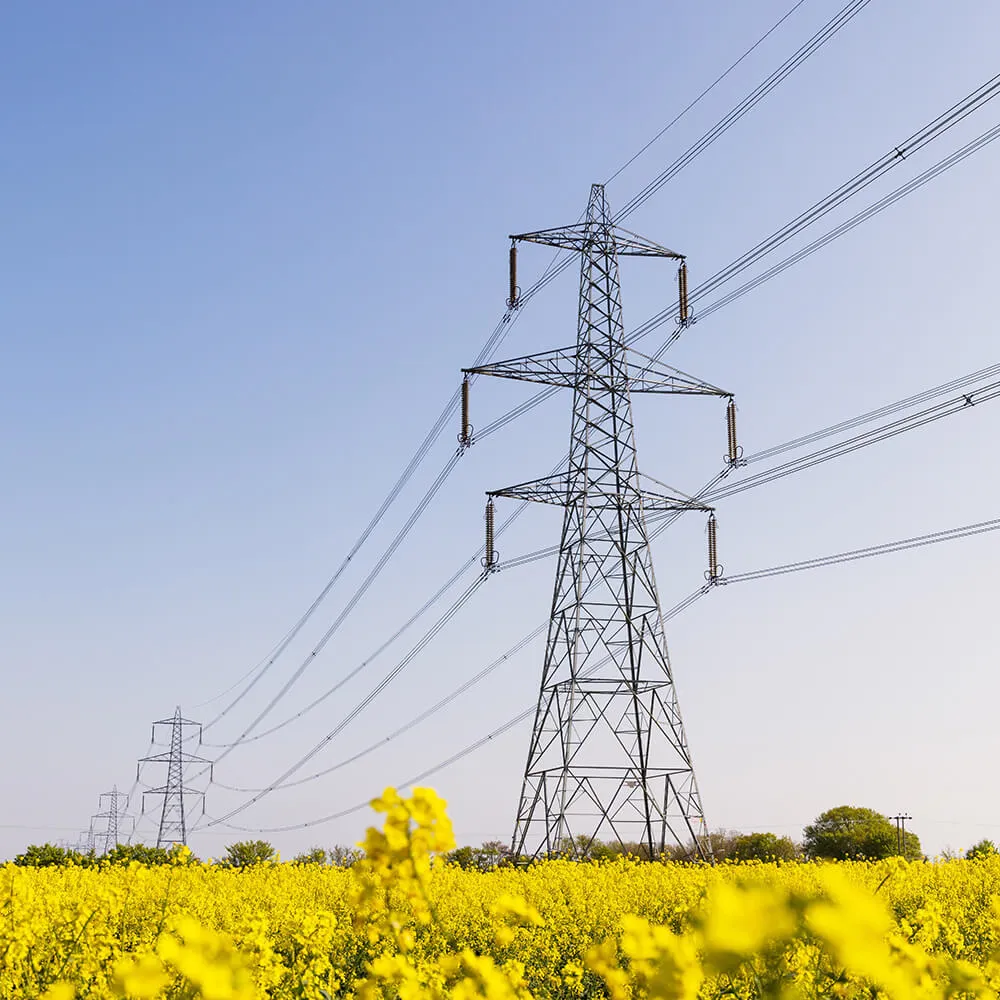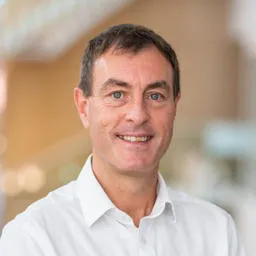Futureproofing energy networks
The transition to Net Zero
All eyes are on utilities providers as we transition to a Net Zero future, but it’s not as simple as flicking a switch and swapping to renewable energy generation.
Here we explain how access to accurate location data can support utilities companies in futureproofing their networks for 2050 and beyond.

Heat mapping
The climate crisis is the single greatest issue of our generation.
2022 was one of the hottest years on record in the UK, highlighting the effects of climate change on air temperature.
However, location data can provide insight into how we are using our land, helping us make the most of our green spaces and heat traps.
The UK is already leading the way in climate adaptation by using space data to monitor and understand the impact of climate change. For example, in a project backed by the UK Space Agency, OS is collaborating with the National Centre for Earth Observation and Space4Climate to use satellite data to monitor and map heat in locations at greatest risk. This project was made possible by OS’s highly accurate location data, overlaid with earth observation data.
Revealing locations that are at greater risk allows local governments to plan better and implement effective policies to deal with extreme weather events. Accurate location data can also be used to optimise tree planting and land management, ensuring that planning is resilient to future change. It’s not just local governments that can benefit from such insight. Utilities companies can use location data to better understand their network and asset resilience from weather events like extreme heat. Knowing precisely where these assets are, and the risks placed upon them, will allow utilities providers to carry out better, more targeted maintenance quicker than before; in turn, delivering better customer service.
In cities, heat mapping can be used to find heat islands. These spots, where land surface is densely covered with roads, pavement, buildings, and other surfaces that absorb and retain heat, could benefit from building adaptation. For example, retrofitting green roofs and green spaces that could be used for heat pumps and as low carbon heat sources.
Heat mapping can also be used to enable community-driven energy generation, where an entire city or municipality create micro energy grids, powered by solar panels or nearby wind farms to help reduce demand on the national grid and lower their carbon footprint.
Asset planning
By 2030, it’s estimated that there will be between eight million and 11 million hybrid and electric cars in the UK, requiring 300,000 charging points. With just 37,000 existing in 2023, it’s clear that work is required to build this infrastructure.
The Department for Transport, in conjunction with the University of Exeter, undertook a study to estimate the proportion of properties in a certain area that could accommodate private electric vehicle charge points powered by the household. Using OS’s geospatial data, combined with other datasets, they developed an algorithm that could be used to classify residential dwellings as potential locations for private charge points. The test area revealed 84% of areas examined were viable.
As the number of electric vehicles on the road increases, data like this will prove to be vital. Also, for public-use chargers, it’s important to see additional data, like how many houses exist within a postcode and which have off-street parking available. This will allow chargers to be placed in the most efficient locations.
Once this infrastructure is in place, it’s also important that we have a clear understanding of how the national grid is operating in terms of consumption. Combining real-world sense data with analytical models will allow us to better understand this consumption, predict change, and design the networks of the future.
Avoiding strikes
Around four million kilometres of pipes, sewers, electricity, and telecoms cables are buried underground in the UK, accounting for a significant proportion of the nation’s utility, building, and transport infrastructure. It’s estimated that, every seven seconds, a hole is dug to access these assets for repairs, upgrades, and new installations.
The vast amount of holes dug, coupled with the unreliability of underground asset location data, means that there are around 60,000 accidental strikes per year, leading to injury, project delays, and disruption to traffic and local economies. The total cost of these accidental strikes is estimated to be around £2.4 billion every year.
The lack of a single source of location data for underground assets has had a huge impact on the number of strikes over the years. While location data exists, it’s siloed in separate private companies and local authorities, with data sharing between them often slow and resource intensive.
To help combat this, the UK government appointed Atkins to deliver a new data platform: the National Underground Asset Register (NUAR) — a single, secure data-sharing service to record the location and characteristics of underground assets. Atkins are working with Ordnance Survey, 1Spatial, GeoPlace, and the Greater London Authority. In April 2023, the first phase of NUAR launched, which covers the North East of England, Wales, and London.
Prior to NUAR, location data was siloed across different industries and stored in different formats. NUAR provides workers with an interactive, standardised digital view of the underground assets in a given location, reducing the risk of accidental strikes and resultant delays, costs, and traffic disruption.
Also, improving access to datasets such as gas, water, and electricity supply lines in a secure way provides a significant advantage in surveying and risk assessment, thus reducing risks and helping to improve safety onsite.
Better service
It’s important for providers to be aware of customers that require additional support, particularly vulnerable customers who are blind, hard of hearing, or living with long-term illnesses.
OS is helping overcome this by being involved in a pilot called Support For All, a register organised by Northumbrian Water. The pilot brings together data from various utilities providers to build a master list of all residents in the North East and South East that might require additional support from their providers.
Once the list is aggregated, it will be disseminated out to all of the utilities providers involved so that they can understand which of their customers are vulnerable. While utility providers will have some insight already, Support for All will help ensure that every resident is provided with the support that they need, especially as our reliance on fossil fuels reduces and the way that households receive energy changes.
Achieving Net Zero emissions by 2050 is key to protecting our planet for the future. However, OS understands the challenges that the energy transition causes for utilities companies.

Strategic Advisor to the CEO
Control today. Shape tomorrow.
Find out how to solve the challenges utilities and telecoms organisations face
See how effective use of data insights can unlock a ‘whole system’ view, enabling utility and telecoms leaders to make more-informed decisions, faster, and master adaptation in an era of increasing complexity and instability.